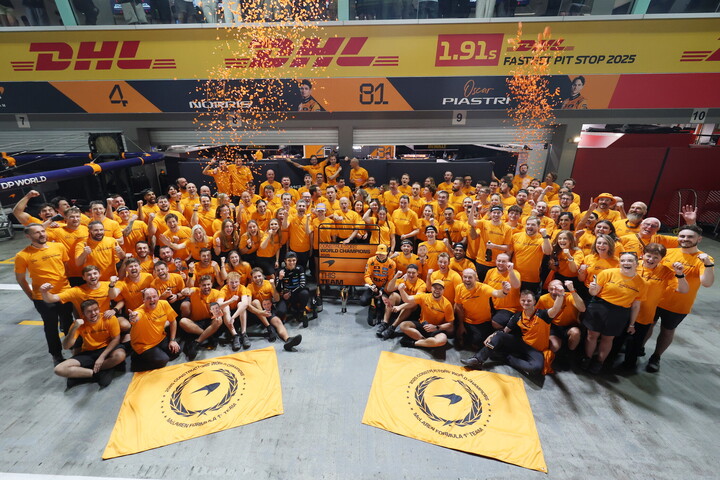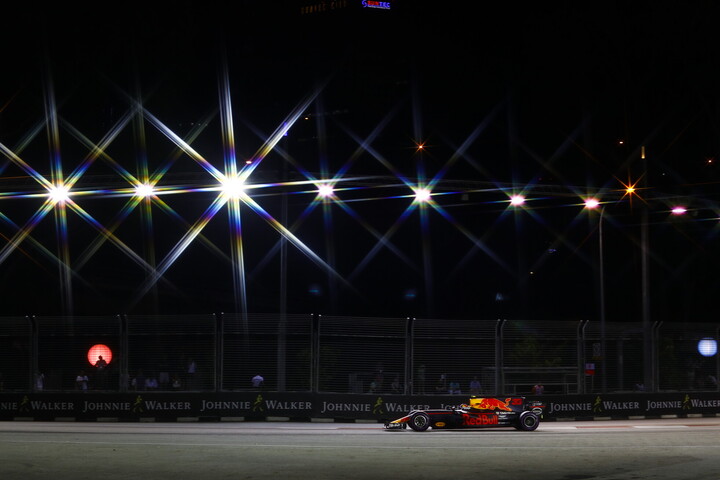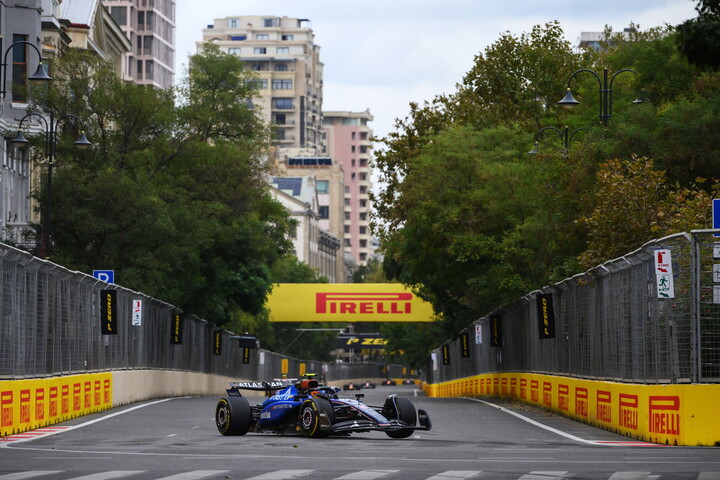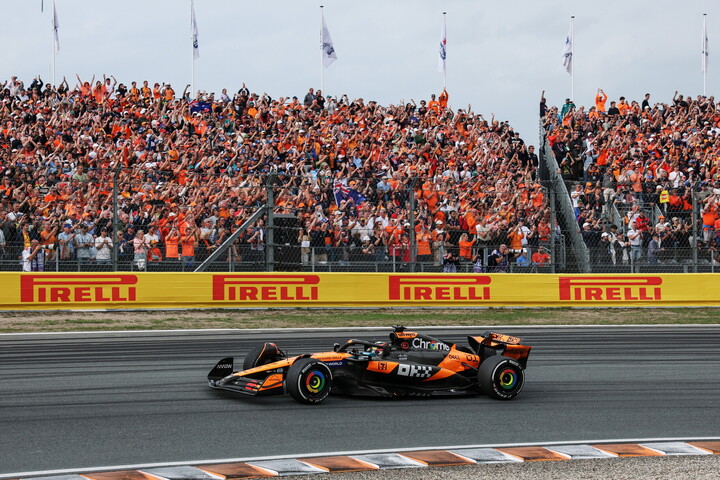Singapore: let there be light!

In 1999, the Malaysian Grand Prix arrived, which coincidentally will be held this year for the final time. China was not far behind: the Chinese Grand Prix made its debut in 2004, but on a traditional circuit that was so large it would have been impossible to illuminate in any meaningful shape or form. Something else was needed. And when Singapore came about as a possibility, the solution presented itself. Singapore's street circuit is 5.065 kilometres of twists and turns, hemmed in by crash barriers as well as glass and cement skyscrapers, which during the day also act as a bit of a sunshade for the asphalt. The allure of a Monaco-style street circuit was transplanted to the modern and opulent Marina Bay district of Singapore, very much a trendy area of the Far Eastern city state. There's a seemingly never-ending succession of left and right corners, just a few centimetres away from unforgiving barriers just waiting to rip off wheels and suspension. There are a few parts that are quick as well, adding up to an average speed of about 170kph over the course of the lap. But what really defines Singapore is the network of cables and light installations hanging over the circuit, illuminating every metre. The result of this state-of-the-art lighting, suspended seven or eight metres above the track, is more visibility than you actually get during the day, with the tops of the surrounding skyscrapers fading into obscurity.
The first question marks centred around the drivers. Would they be able to adapt their hawk-like vision to light and shade conditions that would inevitably be more extreme than anything seen during a conventional daytime race? And that was without considering the long, curved tunnel: which would add another element to the visual challenge. Some drivers were brought to Marina Bay to sample for themselves the lighting capacity of the equipment being considered. Their verdict was positive and the question was solved. And so, on to another problem: how would the drivers adapt their sleep patterns to a night race? In other words, how could they guarantee to be rested and alert enough to produce their maximum efforts at a time when they would be normally being massaged and prepared for bed by their trainers? This was resolved equally swiftly: Singapore is a favourite for drivers and teams precisely because the six-hour time difference with Europe can be neatly sidestepped without disrupting circadian rhythms too much, and so avoiding jetlag. Generally, people get up in the late morning, have breakfast in the early afternoon, take lunch what it's already dark, eat dinner after midnight, and eventually head off to bed at around four in the morning. It's an easy schedule to adapt to, and it means that when getting back to Europe, everyone feels as fresh as they would be had it just been a quick trip around the block.
Everything was in place, and so let there be light! When the red lights switched off and the first Singapore Grand Prix began in the evening of 28 September 2008, the whole world saw that Formula 1 and night time could co-exist quite happily. The lighting installation put in place by an Italian company contributed to the first of a series of unforgettably spectacular races. The difficulty of the narrow circuit and natural slipperiness of the road-going asphalt regularly turns the grand prix into one of the trickiest of the year. Complicating matters further is the intense heat, still a factor even at night. And with the sort of humidity that makes even jogging difficult, you can imagine the challenge of keeping a Formula 1 car on the road and out of the wall for a full two hours, which the Singapore race normally runs to: thanks also to the virtual guarantee of a safety car at some point to deal with the various incidents and accidents that characterise the race. All of this quite literally under the spotlights at nearly 200kph, splitting the night that surreally begins only a few metres above the spectators' heads – and providing TV cameras with a show like nowhere else in the world.




